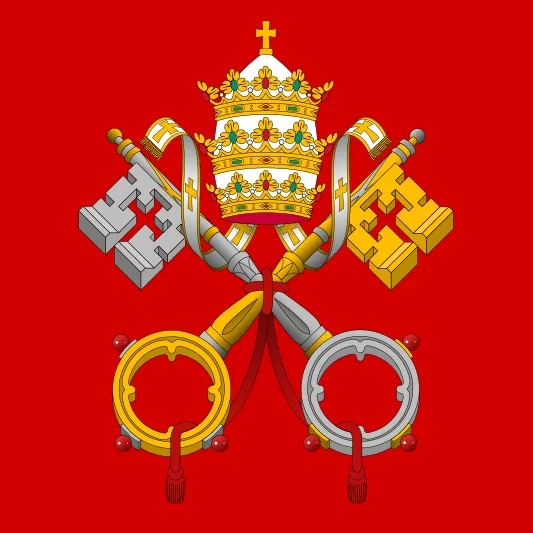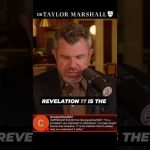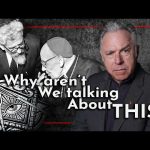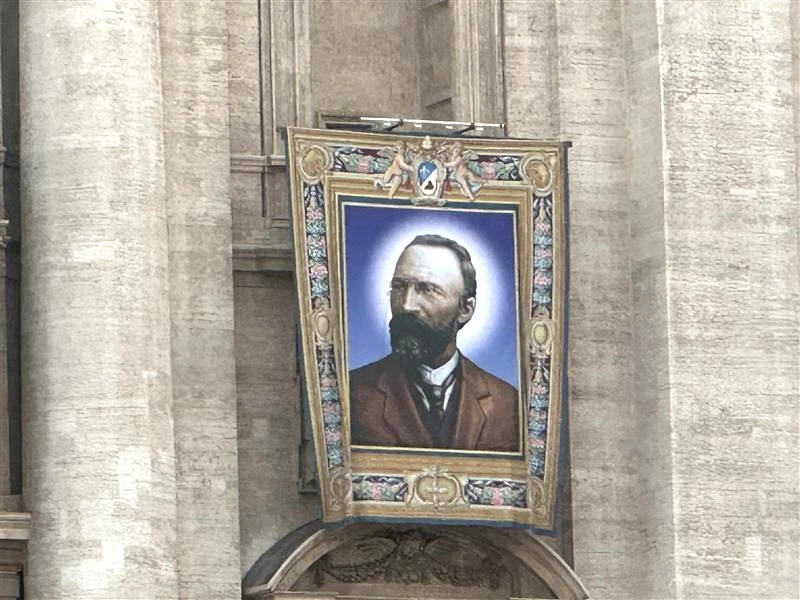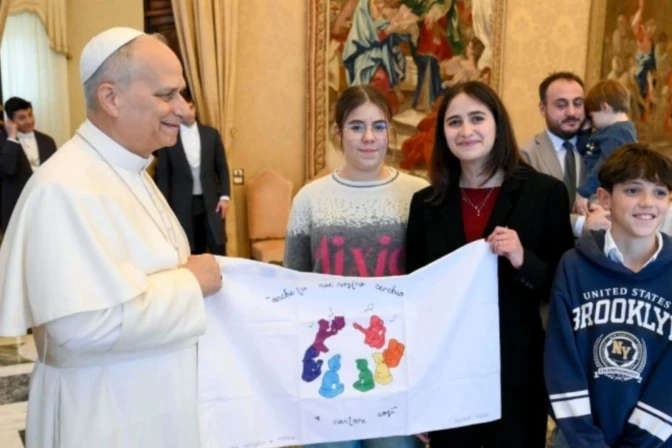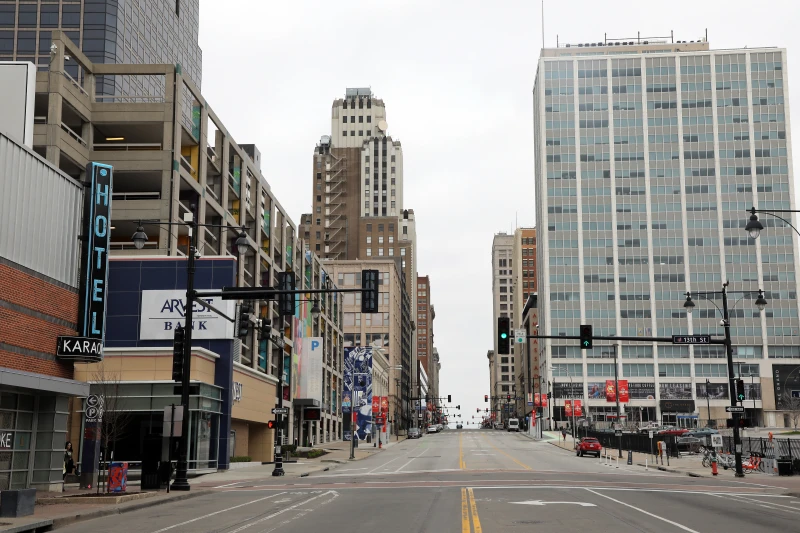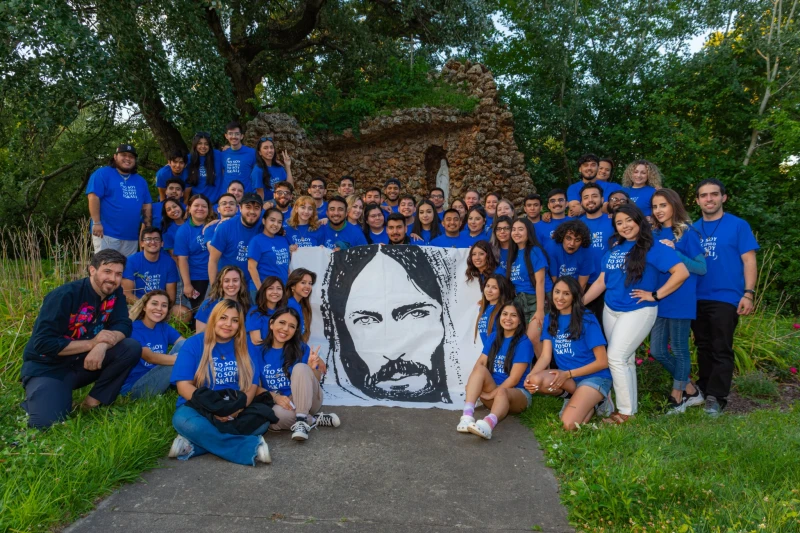
Once an “ordained” Satanic priest, Bartolo Longo underwent one of the most dramatic conversions in recent Church history. He was canonized a saint on Sunday, Oct. 19, 2025, in St. Peter’s Square at the Vatican. / Credit: Courtney Mares/CNA
Rome Newsroom, Oct 28, 2025 / 06:00 am (CNA).
St. Bartolo Longo — a former Satanist “priest” whose remarkable conversion led him to create a Shrine to Our Lady of the Rosary and spread devotion to the prayer — was canonized by Pope Leo XIV on Oct. 19.
In addition to his example of faith and Marian devotion, Bartolo Longo (Bartholomew in English) can also be a model for those struggling with their mental health, Dominican Father Joseph-Anthony Kress told EWTN News.
Kress, the Dominican order’s promotor of the rosary, said Longo “continued to struggle with mental health, and he continued to struggle with suicidal ideations even after his conversion.”
“As a priest, I’ve seen many people that think that after they convert … that mental health shouldn’t be an issue anymore,” the Dominican said. “But [Bartolo Longo] is a great witness to somebody who struggles through that.”
Originally born into a devout Roman Catholic family, Longo fell away from his faith while studying law in Naples in the 1860s — a period in which the Catholic Church in Italy faced opposition from a nationalist movement fighting for Italian unification. Most of the main leaders of the “Unification” movement were Freemasons who held strong anti-Catholic ideas.
The Catholic Church was also fighting against the growing popularity of the occult, which had a strong presence in Naples at the time.
Longo himself became involved in a Satanist cult and eventually claimed to have been “ordained” as a Satanist “priest.”
However, after Longo struggled for several years with anxiety and depression, including suicidal thoughts, a university professor from his hometown, Vincenzo Pepe, urged him to abandon Satanism and introduced him to his future confessor, Dominican Father Alberto Radente.
Under the guidance of Radente, Pepe, religious sister (and now saint) Caterina Volpicelli, and the woman who later became his wife, Countess Marianna Farnararo De Fusco, Longo came back to his Catholic faith.
One defining moment in Longo’s reversion took place in October 1872, according to Archbishop Tommaso Caputo of Pompei, Italy.
“Longo arrived in Pompeii to take care of the properties of the countess [De Fusco] and, walking through those streets — dangerous because of the presence of bandits and malaria — he felt an inner inspiration: ‘If you seek salvation, spread the rosary. It is Mary’s promise. Those who spread the rosary are saved!’ That day, the young lawyer promised himself that he would never leave that valley [of Pompeii] without first spreading the prayer of the rosary,” Caputo told CNA’s Italian-language news partner, ACI Stampa.
“It all began that day,” the bishop continued. “Longo began by catechizing the peasants; he then renovated the small parish church of the Holy Savior and, on the advice of Bishop Giuseppe Formisano of Nola, Italy, decided to build a new church dedicated to Our Lady of the Rosary — this church became the Shrine of Our Lady of Pompeii.”
Kress said that, despite turning away from the occult, Longo continued to struggle with his mental health: Whenever he would be “on the very brink of despair, he recalled the promise of our Blessed Mother to St. Dominic that anyone who promotes the rosary will be saved. And so it was the promises that gave him enough hope to persevere through those dark moments.”
After his conversion, Longo “began to actually go back to the exact places that he participated in these occult activities,” Kress said. “And now, being very firmly rooted in his faith and his devotion to the Blessed Mother would … stand up in these occult practices, seances and things like that, and stand up and with a rosary in his hand and claim these moments for the Blessed Mother and encourage all that were participating to reject their past, reject their ways, and turn to the Blessed Mother for protection and happiness.”
Longo, who became a Third Order Dominican in 1871, “is highly relevant today, because after his conversion, he lived his life deeply rooted in the Gospel,” Caputo said.
Three years after first receiving the divine inspiration to spread devotion to the rosary, Longo received the image of Our Lady of the Rosary that became the centerpiece of the Catholic shrine in Pompeii.
The image “was a worn, battered canvas. It arrived in Pompeii on a humble manure cart, but according to the man we now recognize as an ‘apostle of the rosary,’ who was immediately disheartened by the condition of the icon, it became more beautiful every day,” Caputo recounted.
The bishop of Pompeii recalled the many evangelical and charitable works in the town by Longo and his wife, including the foundation of a girls’ orphanage and institutions for children of prisoners.
“Around the shrine, whose first stone was laid on May 8, 1876, and which was consecrated in 1891, roads, squares, services, a tram line, the railway station, the post office, and workers’ houses sprang up. Longo did a lot, but he always considered himself, evangelically, a ‘useless servant.’ For him, everything was the work of Our Lady of the Rosary and her powerful intercession,” Caputo said.
“At the root of every achievement, at the foundation of the work in Pompeii, was always the holy rosary, a wonderful synthesis of the Gospel, contemplation of the face of Christ the Savior through the eyes of the heavenly Mother,” he added.
Longo died in Pompeii in 1926. His last words were: “My only desire is to see Mary who saved me and who will save me from the clutches of Satan.”
“Even today, in Pompeii, everything reminds us of his name and his teachings,” Caputo said.
Veronica Giacometti, a reporter for ACI Stampa, CNA’s Italian-language news partner, contributed to this report.
